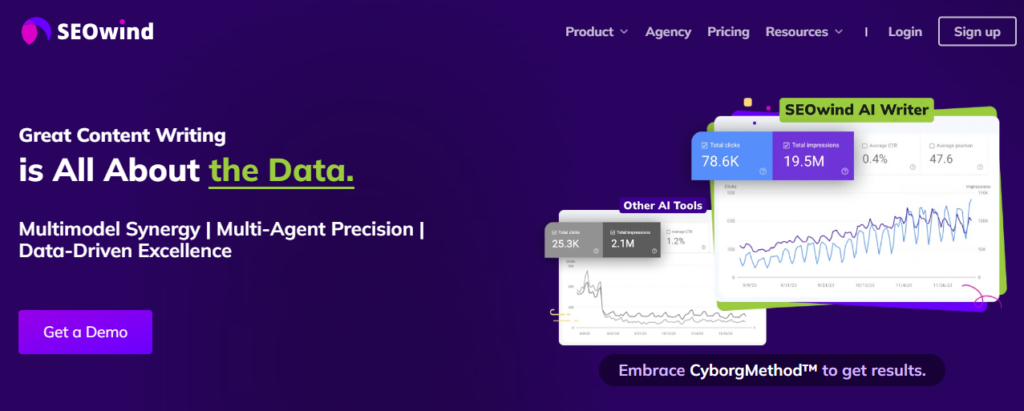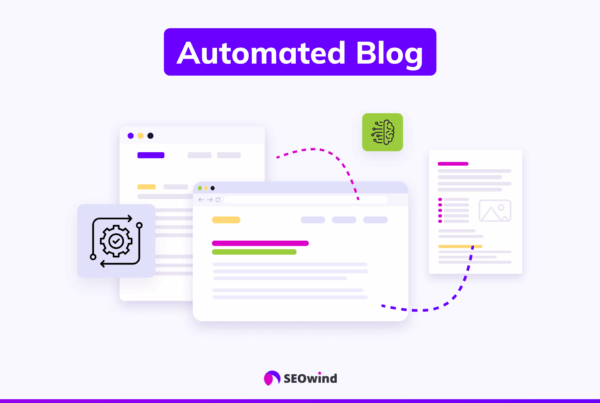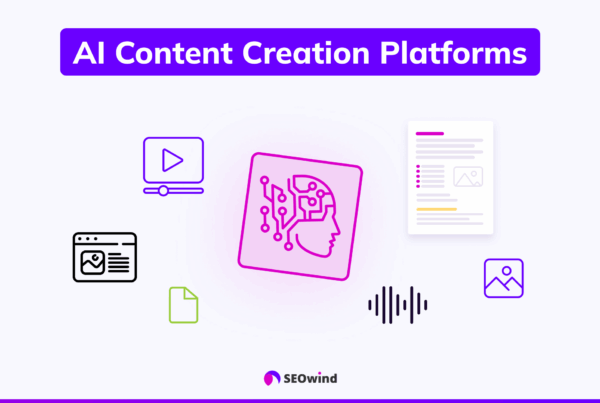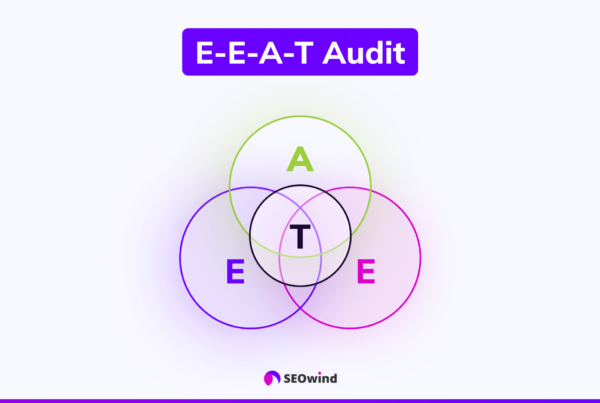AI tools have become invaluable for boosting productivity and creativity. However, with their widespread adoption comes the responsibility to use these tools ethically and effectively. Whether you’re writing an academic paper or crafting professional content, understanding how to collaborate with AI while maintaining authenticity is essential. This comprehensive guide explores proven techniques for responsible AI integration that produce high-quality, authentic content while addressing legitimate concerns about AI detection.
Ethical Considerations in AI Content Creation
Before tackling technical strategies, it’s important to establish a foundation of ethical AI use that guides all implementation decisions.

Transparency and Disclosure Best Practices
Responsible AI use begins with understanding when disclosure is appropriate:
- Academic Settings: Most educational institutions now have specific policies about AI usage. For example, Northern Illinois University allows the broad use of generative AI tools. Still, it requires proper documentation and citation: “You are responsible for the information you submit based on an AI query… Your use of AI tools must be properly documented and cited in order to stay within university policies on academic honesty.”
- Professional Contexts: In many professional settings, disclosure practices focus on quality rather than the tools used. However, transparency builds trust when clients, colleagues, or supervisors reasonably expect to know about AI assistance.
- Content Platforms: Major platforms are implementing clear disclosure requirements. YouTube requires disclosure for realistic-looking synthetic content, especially on sensitive topics. At the same time, Meta plans to implement labeling for AI-generated content across Facebook, Instagram, and Threads.
Establishing Personal Guidelines
Developing your own ethical framework for AI use improves consistency and integrity. Consider creating personal guidelines about when and how you’ll use AI. For instance, you might use it for research and outlining but not for personalized communications or creative work that requires your unique voice.
Developing your own ethical framework for AI use improves consistency and integrity. My guidelines include CyborgMethod™, where I cooperate with AI, letting it do the research, review, and writing. Still, I’m feeding it with my unique insights and experience and reviewing the content I get.
Focus on using AI to enhance rather than replace your own expertise and judgment. This approach ensures AI serves as a collaborative tool that amplifies your capabilities rather than substituting for them.
Balancing Efficiency with Authenticity
The most ethical approach to AI use focuses on value creation, not labor reduction. Use AI to handle routine tasks so you can focus on adding unique insights, refining arguments, and integrating personal experiences that AI cannot replicate. This creates a complementary relationship that leverages both AI capabilities and human creativity.
Prioritize creating valuable content rather than simply producing large volumes of material. Quality and authenticity ultimately build more trust than quantity alone.
Case Studies: Successful Transparent AI Integration

Several organizations have developed effective approaches to incorporating AI while maintaining credibility and audience trust.
CNET’s Responsible AI Partnership
CNET uses AI to assist with content creation but maintains strict human oversight. After identifying errors in early AI-written articles, they paused their program to build better editorial processes. CNET now uses an in-house AI engine called RAMP (Responsible AI Machine Partner) to assist in content creation. It is transparent about which articles feature AI-generated content. This approach demonstrates their commitment to maintaining credibility while leveraging AI capabilities.
The Washington Post’s Heliograf
The Washington Post uses an AI writing tool called Heliograf to automate the creation of news stories based on data analysis. By implementing this AI tool for data-driven reporting, they have seen a significant increase in readership and engagement while maintaining their reputation as a credible news source. The key to their success has been clearly defining where AI adds value (data processing and initial drafting) while preserving human editorial judgment for context and significance.
LinkedIn’s Collaborative Articles
LinkedIn launched a collaborative articles program that uses AI to start conversations about various topics, which are then enhanced with expert perspectives and contributions from the LinkedIn community. This approach combines AI-generated content with human expertise, maintaining credibility through the involvement of subject matter experts. The program reached over 1.5 million organic users, demonstrating its success in engaging audiences through this transparent AI-human collaboration model.
Understanding AI Detection Technology
As AI tools become more sophisticated, so do the methods designed to identify their use. Understanding how these detection systems work is crucial for anyone looking to use AI effectively and responsibly.
How AI Detectors Actually Work
AI detection tools operate on several key technical principles that analyze writing patterns:
- Perplexity Analysis: This measures how unpredictable or surprising the text is. Human writing typically has higher perplexity (more unpredictable word choices) than AI-generated content, which tends to be more predictable in its language patterns.
- Burstiness Evaluation: Human writing displays “burstiness” – sentence complexity and length variations that create natural rhythm. AI-generated text often lacks this natural variation, maintaining a consistent complexity level throughout.
- Pattern Recognition: AI detectors identify repetitive structures, phrases, and transitional elements commonly used by AI systems but less frequent in human writing.
- Statistical Analysis: These tools examine the statistical properties of text, including word frequency distributions, which often differ between human and AI writing.
Current State of AI Detection Accuracy
Recent studies from 2023-2024 provide important insights into the accuracy of detection tools:
- Originality.ai achieved 97% overall accuracy in identifying AI-generated content across GPT-3.5, GPT-4, and human-written papers in a comprehensive study evaluating 16 AI text detectors.
- In the RAID benchmark study, Originality.ai outperformed 11 leading AI detectors with 85% accuracy on the base dataset and 96.7% accuracy on paraphrased content.
- Turnitin reported a false positive rate of less than 1% for documents with 20% or more AI writing. However, their false positive rate at the sentence level was around 4%.
Detection Challenges and Limitations
Current detection technology faces several significant limitations:
- AI detectors were found to be more likely to incorrectly flag text written by non-native English speakers as AI-generated, raising equity concerns.
- Paraphrasing tools can often bypass detection, though some detectors like Originality.ai claim to detect paraphrased content.
- Experts suggest that reliable AI detection may not be possible with current tools, especially as AI writing becomes more sophisticated.
- There are legitimate concerns about privacy and potential bias in AI detection tools, particularly for neurodivergent students and non-native English speakers.
5 Strategies on how not to get caught using AI

Source: Giphy
The most effective approach to using AI involves multiple complementary strategies that focus on creating genuinely valuable, personalized content.
1. Use AI as a Starting Point, Not the Final Product
Approach AI as a collaborative tool rather than a replacement for your own work is fundamental. Begin by using AI to generate initial ideas, create rough outlines, or produce first drafts. Then, substantially transform this foundation through your own expertise and perspective.
Expert writers develop a workflow where AI handles routine elements while they focus on adding unique insights, refining arguments, and integrating personal experiences that AI cannot replicate.
2. Blend AI-Generated Content With Your Original Writing
Creating a seamless integration between AI assistance and your own work produces more authentic content. Start with sections you’re comfortable writing independently, then use AI to help with challenging portions. Weave these components with a consistent voice, terminology, and reasoning patterns. This interleaving technique creates natural variations in writing style that reflect genuine human authorship.
Effective blending requires developing skills in matching AI output to your personal writing style, including your typical vocabulary range, sentence structure preferences, and rhetorical approaches.
3. Adapt Language and Structure
AI often produces text with recognizable patterns that can undermine authenticity. Transform AI-generated content by varying sentence lengths dramatically – combine short, punchy sentences with longer, more complex ones. Introduce occasional sentence fragments or conversational elements where appropriate. Replace generic transitions with more creative connections between ideas.
Restructure predictable paragraph patterns by occasionally starting paragraphs with questions, quotations, or bold statements rather than consistently using topic sentences. This creates the natural unpredictability characteristic of human writing.
4. Add Personal Elements
Personalizing AI-generated content is perhaps the most powerful strategy for creating authentic work. Incorporate specific personal anecdotes, experiences, or observations that relate to your topic. Adding unique elements that only you could know significantly enhances authenticity and value.
Include your genuine opinions, even controversial ones when appropriate, as AI typically generates balanced, neutral perspectives. Your authentic voice and perspective will shine through these personalized elements.
The Alliance of Independent Authors advises: “It is your job as an ethical author to edit and curate the words generated by a tool you’ve prompted,” emphasizing the importance of making AI-assisted content genuinely yours.
5. Fact-Check and Transform Information
AI often presents information in predictable ways and may include outdated or incorrect data. Verify all factual claims from AI and replace generic information with specific, well-researched details. Restate concepts using industry-specific terminology that demonstrate genuine expertise. Replace vague examples with concrete, real-world applications or case studies.
This approach not only improves authenticity but also significantly enhances the quality and value of your content.
Technical Approaches to Enhancing AI-Human Collaboration
Beyond general strategies, specific technical approaches can help transform AI-generated text into more natural, human-like content.
Understand and Modify Perplexity and Burstiness
These two technical metrics are central to both detection systems and natural human writing:
- Increasing Perplexity: Use unexpected word choices, cultural references, or industry jargon to make your writing less predictable. Replace common words with more specific alternatives. For example, instead of “good results,” use “promising outcomes” or “encouraging findings.”
- Enhancing Burstiness: Create more variation in your sentence structure and length. Human writing naturally varies between simple and complex sentences, creating “bursts” of complexity followed by simpler constructions. AI tends to maintain a consistent level of complexity throughout.
Vary Vocabulary and Phrasing
Creating linguistic diversity improves both quality and authenticity. Create word clouds of your AI-generated draft to identify overused terms, then find creative alternatives. Replace generic transitions like “additionally” or “furthermore” with more varied connecting phrases.
When appropriate for your audience, introduce occasional colloquialisms, idioms, or region-specific expressions. These natural language elements are difficult for AI to generate consistently.
Avoid Common AI Phrases and Structures
Remove phrases like “it is important to note,” “as an AI language model,” or “based on the information provided.” Eliminate unnecessarily formal language and overly structured transitions between paragraphs.
Reduce reliance on qualifying statements that AI frequently uses to avoid making direct claims (“it could be argued that” or “some might suggest”). Instead, make clearer assertions when your knowledge supports them.
Advanced Techniques for Authentic AI-Assisted Content
I’ll share tactics to create content seamlessly, blending AI assistance with your authentic voice.
Develop a Personal Style Guide
Creating a consistent, recognizable writing style makes your AI-assisted content feel authentically yours.
Document your typical sentence structures, vocabulary preferences, and rhetorical devices. Use these as guidelines when editing AI-generated text to ensure consistency with your established voice.
Include common phrases, transitions, or expressions you naturally use in your writing. Incorporating these personal linguistic markers helps maintain your authentic voice throughout AI-assisted content.
Identify topics where you have unique perspectives or specialized knowledge. When writing about these areas, focus on contributing your original insights rather than relying heavily on AI.
Master Advanced Prompting Techniques
How you prompt AI significantly impacts the quality and naturalness of the output.
Instruct AI to generate content with varied sentence structures and conversational elements rather than formal, academic prose. Specify the exact tone, style, and complexity level you want.
Use “chain-of-thought” prompting by asking AI to explain its reasoning process. This often produces more nuanced, human-like content that reflects critical thinking rather than simple summarization.
Request multiple variations of the same content, then combine the best elements from each version. This creates a final product with more linguistic diversity than any single AI-generated draft.
Create a Multi-Step Editing Process
Systematic editing transforms basic AI output into polished, natural content.
First, identify and replace generic phrasing and clichéd expressions that signal AI generation. Next, restructure predictable paragraph patterns and introduce more varied sentence constructions.
Add texture through specific examples, sensory details, or personal anecdotes that AI couldn’t generate. Finally, read the content aloud to identify any remaining unnatural phrasings or rhythms.
The intentional introduction of minor stylistic variations – occasional sentence fragments, parenthetical asides, or conversational elements – can make text appear more authentically human without compromising quality.
Write AI articles with SEOwind and do not get caught

When it comes to content creation, SEOwind has emerged as a powerful ally for those looking to produce high-quality, AI-assisted articles without raising suspicion. This innovative platform combines the efficiency of AI with the nuanced approach of human expertise, offering a solution that’s hard to beat when it comes to creating SEO-optimized and authentically human content.
SEOwind is a comprehensive content creation system built on the CyborgMethod™ philosophy, which encourages seamless cooperation between humans and AI. This approach ensures that your content benefits from the best of both worlds—AI’s efficiency and data-processing capabilities and human creativity and understanding.
Here’s how SEOwind can help you write articles that don’t get caught as AI-generated:
- Comprehensive Research: SEOwind emphasizes research and considers this to be 80% of the work. By leveraging multiple AI agents and diverse data sources, including Claude 3.5, Gemini 1.5 Pro, Perplexity, and GPT-4, SEOwind conducts in-depth content and keyword research. This thorough approach ensures your articles are well-informed and data-driven, mirroring the depth of human-conducted research.
- Personalized Content Creation: SEOwind allows you to define your unique tone of voice and input information about your company, services, and target audience. This personalization ensures that the AI-generated content reflects your brand’s identity, making it less likely to be flagged as generic AI output.
- E-E-A-T Content Focus: SEOwind’s multi-agent AI system works like a human marketing team, combining the expertise of a data researcher, SEO specialist, content writer, and content editor. This collaborative approach results in content that demonstrates Expertise, Experience, Authoritativeness, and Trustworthiness (E-E-A-T), key factors that search engines look for in high-quality content.
- SEO Optimization: The platform integrates SEO best practices into the content creation process, ensuring your articles are well-written and optimized for search engines. This strategic approach helps your content rank higher and drive more organic traffic.
- Content Updating Capabilities: SEOwind doesn’t just create new content; it also helps you update existing articles. This feature is crucial for maintaining the relevance and freshness of your content, a factor that search engines and readers appreciate.
- Outline and Brief Creation: Before writing, SEOwind helps you create comprehensive content outlines and briefs. This step is crucial in structuring your thoughts and ensuring your article has a logical flow, a characteristic often associated with human-written content.
- Human-Like Content Creation: By combining Retrieval-Augmented Generation (RAG) with a Multi-Agent AI system, SEOwind produces content that closely mimics human writing patterns. This sophisticated approach significantly reduces the risk of your articles being detected as AI-generated.
To make the most of SEOwind and ensure your articles don’t get caught as AI-generated, consider these tips:
- Actively engage with the research process, adding your own insights and experiences to the AI-generated data.
- Use the personalization features to their fullest, ensuring the content reflects your brand voice.
- Review and edit AI-generated content, adding your personal touch and expertise where necessary.
- Leverage the content updating feature to keep your articles fresh and relevant, a practice typical of human-maintained websites.
By utilizing SEOwind’s advanced features and combining them with your expertise, you’ll create articles that are safe from AI detection and provide value to your readers.
Comparing AI Enhancement Tools
Several tools specifically designed to improve AI-generated content have emerged. Understanding their capabilities helps you choose the right option for your needs.
Key Features to Consider in AI Enhancement Tools
When evaluating AI enhancement tools, focus on these important capabilities:
- Preservation of Meaning: The best tools maintain your original message while improving the natural flow and readability of the text.
- Natural Language Enhancement: Look for tools that introduce appropriate tone, complexity, and structure variations rather than simply replacing words with synonyms.
- Quality Improvement: Consider whether the tool helps improve readability, engagement, and overall content quality beyond surface-level changes.
- Quality Control: Evaluate whether the tool introduces errors, awkward phrasing, or factual inaccuracies during enhancement.
Comparative Analysis of Popular Tools
Different tools offer varying approaches to improving AI content:
SEOwind’s AI Humanizer: Focuses on maintaining professional quality while introducing natural language patterns. Particularly effective for business and marketing content. Avoids introducing errors while preserving the original meaning.

Undetectable.ai: Employs a multi-layer transformation process with different intensity settings. Offers strong results for improving text naturalness but may sometimes alter meaning at higher settings.
Quillbot: Provides various paraphrasing modes with different levels of creativity and structure changes. Works well for academic content but requires careful review of outputs.
According to recent benchmark testing, the most effective enhancement tools improve readability and engagement while maintaining your content’s original meaning and intent.
Practical Guidelines for Specific Contexts
Different contexts require tailored approaches to AI usage and disclosure.
Academic Settings
Many educational institutions now have specific policies about AI usage. Columbia University takes a cautious approach, noting: “While you are not forbidden from using these tools, you should consider the above policy carefully and quote where appropriate. Assignments largely quoted from an AI assistant are very unlikely to be evaluated positively.”
For research papers, use AI primarily for brainstorming, literature review assistance, and structuring arguments rather than direct content generation. Focus on developing your own analysis and conclusions based on the research.
Academic integrity requires proper attribution of AI assistance. The Roosevelt University Library Guide advises: “To avoid plagiarism, it is necessary to cite any quotes, paraphrasing, and ideas you get from AI, just as you would with other sources.”
A practical transparency strategy from academic forums suggests: “Use Google Docs. Google Docs keeps a record of all your edits, so it will be obvious that you wrote the assignment if accused.” This documentation of your writing process can provide evidence of your original work.
Professional Content Creation
In professional settings, efficiency and quality are typically prioritized. Focus on creating content that genuinely serves your audience’s needs while leveraging AI to improve productivity.
Consider a workflow where AI handles first drafts and research compilation. At the same time, you focus on strategic messaging, brand voice alignment, and adding industry-specific insights that demonstrate true expertise.
Key Takeaways and Best Practices

As we’ve explored throughout this guide, using AI effectively isn’t about avoiding detection – it’s about learning to collaborate with these tools in ways that enhance rather than replace your unique human contributions.
Focus on Quality and Value
Treat AI as an assistant that helps you create better work and be more efficient, not as a replacement for your expertise and judgment. The best AI-assisted content reflects your knowledge, perspective, and voice enhanced by AI’s capabilities, not diminished by them.
Case studies like CNET and The Washington Post demonstrate that successful AI integration focuses on leveraging AI strengths while preserving human oversight, creativity, and judgment.
Practical Dos and Don’ts
To summarize key guidelines:
DO:
- Always review and substantially modify AI-generated text
- Inject human expertise, insights, and original perspectives
- Use AI-generated content as a starting point rather than finished material
- Combine AI suggestions creatively with personal, human experience
- Follow relevant disclosure guidelines for your context
DON’T:
- Directly publish AI-generated content without significant edits
- Settle for robotic, impersonal, or generic content
- Rely entirely on AI without human oversight and input
- Hide AI use in contexts where disclosure is expected
Building Skills for the AI Era
The most valuable long-term approach is developing skills that complement AI rather than competing. Critical thinking, original analysis, and creative problem-solving remain distinctly human capabilities. Focusing on these skills allows you to add unique value that AI cannot replicate.
Learning to effectively collaborate with AI – providing clear direction, evaluating outputs critically, and integrating AI assistance into a predominantly human-driven process – is becoming an essential professional skill across industries.
By following these principles and strategies, you can leverage AI to enhance your work while maintaining its authenticity, quality, and unique human perspective. The goal isn’t merely producing content efficiently – it’s using AI to create work that genuinely reflects your best thinking, enhanced but not replaced by technological assistance.
FAQ About AI Use and Detection

How accurate are today’s AI detectors?
While tools like Turnitin claim high accuracy for content with substantial AI input, independent testing shows more variable results. Originality.ai demonstrated 97% overall accuracy in a comprehensive study, but other detectors showed less consistent performance.
False positives remain a significant issue, with some studies showing human-written text incorrectly flagged as AI-generated, particularly for non-native English speakers.
Content that is substantially edited, personalized, and enhanced with unique insights becomes increasingly difficult for detection tools to identify as AI-originated.
When should I disclose my use of AI?
Appropriate disclosure depends on context.
In academic settings, follow your institution’s specific policies. Many now require disclosure when AI has contributed significantly to your work.
Consider whether clients, colleagues, or audience members would reasonably expect to know about AI assistance in professional contexts. When in doubt, transparency builds trust.
For creative content, industry norms are still evolving. Still, major platforms like YouTube and Apple Podcasts are implementing disclosure requirements for AI-generated content.
How do educators distinguish between student work and AI assistance?
Educators use multiple approaches beyond just detection tools.
Many instructors now design assignments that require personal reflection, in-class components, or application of concepts to students’ unique experiences – elements difficult for AI to generate convincingly.
Process documentation (outlines, drafts, research notes) provides evidence of student engagement throughout the writing process rather than just submitting a final product.
Combining written assignments with oral presentations or discussions allows instructors to verify students’ understanding of concepts and ownership of ideas.


